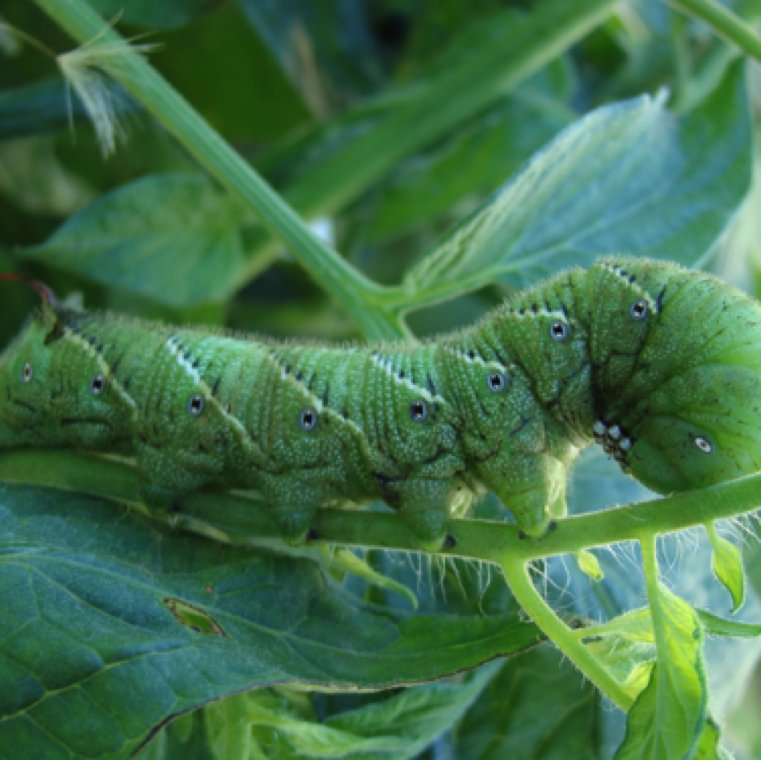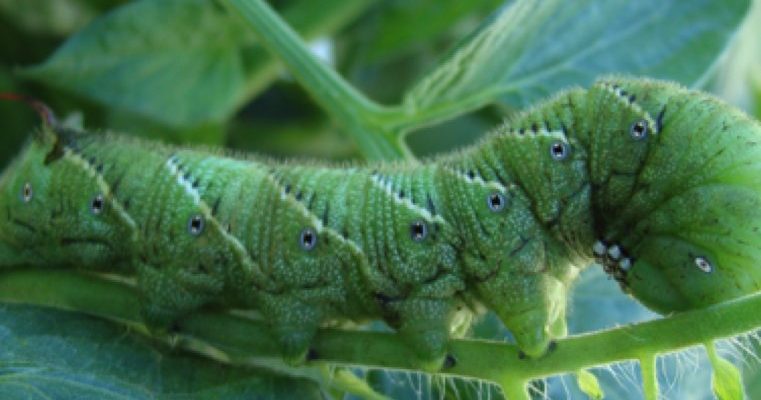
Imagine your garden as a bustling small town. Each plant is a house, and while some are just trying to get along, others can cause real problems. Leaf curling is like a neighborhood disturbance, alerting you that something isn’t quite right. Understanding the connection between hornworms and leaf curling can help you reclaim your garden and keep things peaceful.
Let’s dive in and break down how hornworms might be linked to leaf curling, along with what you can do to protect your plants!
What Are Hornworms?
Hornworms are the larval stage of either the tobacco hornworm or the tomato hornworm. These caterpillar-sized creatures are often easy to spot due to their vibrant green color and that striking horn-like appendage at their rear. They love to munch on the leaves of tomato and pepper plants, which makes them a feared pest among many gardeners.
Hornworms can grow up to 4 inches long, making them quite a sight! If you’re checking your plants regularly, you might just find them camouflaged among the leaves. Their diet mainly consists of the foliage of nightshade plants, which include tomatoes, peppers, and eggplants. That’s why if your garden is home to any of these beauties, you could be inviting hornworms over for dinner.
Noticing signs of hornworms early can save you a lot of trouble later. Keep an eye out for droppings (which look like small dark pellets) on the ground beneath your plants. Another telltale sign? Chewed leaves with ragged edges. If you see these, it’s time to take action!
Understanding Leaf Curling
Leaf curling is when the edges of a leaf turn upwards or downwards, making them look like they’re trying to fold in on themselves. It might sound harmless, but it can be a signal that your plant is unhealthy or stressed.
There are several reasons for leaf curling, including environmental stress, pests, or diseases. Usually, plants curl their leaves as a way to conserve moisture or protect themselves from excessive sunlight. Think of it like pulling your arms in when it’s cold outside.
In the case of pests, leaf curling can be particularly concerning. If your plants are under attack from bugs like hornworms, you’ll want to act quickly. These caterpillars can munch their way through a plant’s foliage, leaving it vulnerable to other issues, including curling leaves.
Sometimes, the stress caused by one issue can lead to other problems surfacing, like discoloration or dead spots on leaves. Understanding the root cause of these changes is vital to giving your plants the best chance for recovery.
Do Hornworms Cause Leaf Curling?
So, do hornworms directly cause leaf curling? The answer is a bit nuanced. While hornworms themselves might not be the cause of the leaf curling, their feeding habits can certainly contribute to the problem. When these hungry caterpillars devour the leaves, they strip the plant of its ability to effectively photosynthesize, which is crucial for its health.
Without enough healthy foliage, plants can struggle to get the nutrients and energy they need. This often leads to stress, making the leaves start to curl. In essence, while hornworms don’t directly curl the leaves, their destructive munching can trigger various stress responses in the plant, including curling leaves.
Interestingly, the more damage hornworms do, the more stressed the plant can become. This is why keeping an eye on hornworm populations is essential for maintaining plant health. You might be wondering—if these pests aren’t the ones curling the leaves, can other insects be responsible?
Other Insects That Cause Leaf Curling
While hornworms are significant culprits, they aren’t the only players in the leaf curling drama. Several other insects can cause similar issues. For example:
- Aphids: These tiny green bugs suck the sap from plant leaves. Their feeding can lead to curling and distortion.
- Spider Mites: While hard to see, these little pests cause leaves to yellow and curl, often leaving fine webbing behind.
- Whiteflies: These insects feed on the underside of leaves, which can also result in curling.
Understanding what you’re dealing with is half the battle. If you notice leaf curling, take a closer look. Identifying the specific pest can help you decide how to tackle the problem effectively.
Preventive measures, such as introducing beneficial insects like ladybugs or using organic insecticidal soap, can be very effective. Remember, a healthy garden is your best defense against these unwanted guests!
How To Identify Hornworms in Your Garden
Finding hornworms in your garden can feel like a treasure hunt, but instead of a prize, you’re after the bad guys! Here are some tips for spotting these crafty caterpillars:
1. **Look for Damage**: Check your plants for large, ragged holes in the leaves. This is often the first sign of hornworm activity.
2. **Check for Droppings**: As mentioned earlier, hornworms leave behind dark green droppings. Look for these beneath the damaged plants.
3. **Search for the Caterpillars**: If you suspect hornworms, closely inspect the plants. Their green coloration helps them blend in, so look closely at the undersides of the leaves and along the stems.
4. **Watch for Signs of Stress**: If your plants are curling or wilting, hornworms might be part of the issue.
Being proactive can make a big difference. Regular inspections can help you catch hornworms early, allowing you to take action before they cause serious damage.
How to Control Hornworms Effectively
When it comes to managing hornworms, there are several methods you can use. Here’s a breakdown to help you choose the best approach for your garden:
– **Handpicking**: This is the most straightforward method. If you spot a hornworm, simply pluck it off the plant and relocate it far away from your garden. Make sure to check for any eggs they might have laid, as well.
– **Biological Controls**: Introducing beneficial insects, like parasitic wasps, can help control hornworm populations. These wasps lay their eggs inside the hornworm, eventually leading to its demise. Think of it as nature taking care of itself!
– **Organic Insecticides**: If the infestation is heavy, you might consider using a suitable organic insecticide. Products with Bacillus thuringiensis (Bt) are particularly effective against hornworms, as they target caterpillars without harming other beneficial insects.
– **Cultural Practices**: Keep your garden healthy by ensuring proper watering, fertilization, and crop rotation. A healthy plant is better equipped to withstand pests.
Taking these steps can help minimize the impact hornworms have on your garden. Remember, a little diligence can go a long way in keeping your plants healthy and thriving!
Understanding the relationship between hornworms and leaf curling can empower you as a gardener. While hornworms are not the sole reason for curling leaves, their destructive feeding can contribute to plant stress that leads to these symptoms.
Regular monitoring of your plants and being quick to act can help you control hornworm populations and avoid potential damage. With the right knowledge and tools, you can nurture a healthy, thriving garden, keeping those pesky intruders at bay.
So next time you see those curled leaves, take a moment to investigate. Your garden will thank you for it!

